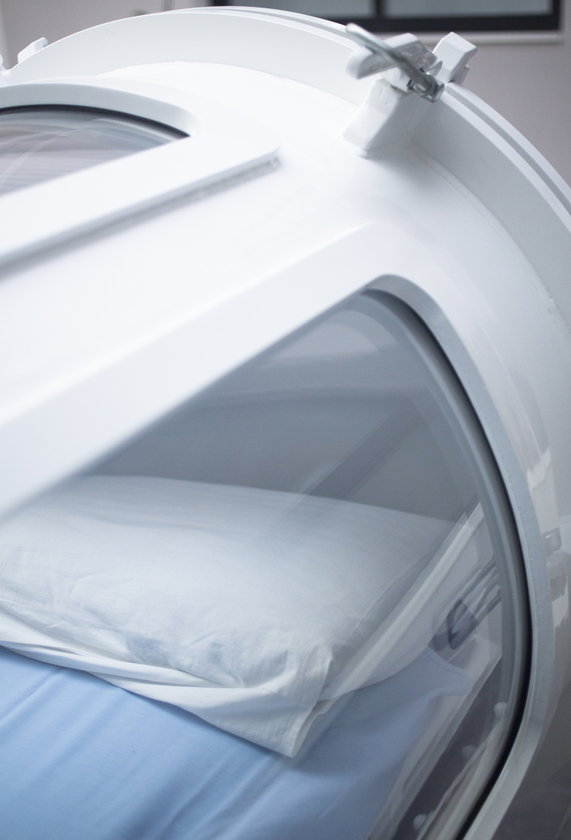Healthy Headlines’s recent feature on Hyperbaric Oxygen Therapy, offered at St. Elizabeth Healthcare’s Patrick T. Birrer Wound Care Centers in Covington and Fort Thomas, proved popular with readers, so we’re back with some additional answers.
What is HBO?
Starting at the beginning: Hyperbaric Oxygen Therapy is administered to patients lying supine in a pressurized chamber. Patients are given 100 percent oxygen at increased pressure, which enables the blood to carry more oxygen throughout the body, which fights infection and promotes healing.
What impact does it have?
Listen to Norm Berry of Burlington, Ky., who used Hyperbaric Oxygen Therapy to counteract the aftereffects of radiation he had undergone for throat cancer. “The radiation treatment I took destroyed so much cell tissue in my throat and my mouth that it needed to be rebuilt,” Berry said in a video testimonial for St. Elizabeth Healthcare. About 15 treatments in, Berry said he began noticing improvement. “My big goal was to be able to sit down with my wife, enjoy a meal, have a conversation,” Berry said. “It changed the quality of my life.”
What is HBO used for?
At St. Elizabeth Healthcare, the most common indications for Hyperbaric Oxygen Therapy include slow-to-heal wounds; diabetic ulcers of the extremities; compromised skin grafts or flaps; chronic osteomyelitis; and late effects of radiation. According to St. Elizabeth’s partners at the Mayo Clinic, Hyperbaric Oxygen Therapy also may be recommended for other conditions including anemia, arterial gas embolism, brain abscess, burns, carbon monoxide poisoning, decompression sickness, gangrene and sudden vision or hearing loss.
What isn’t HBO for?
There is insufficient evidence that HBO is effective in treatment of AIDS/HIV, allergies, Alzheimer’s disease, arthritis, asthma, autism, Bell’s palsy, brain injury, cancer, cerebral palsy, chronic fatigue syndrome, cirrhosis, depression, fibromyalgia, gastrointestinal ulcers, heart disease, heatstroke, hepatitis, migraine, multiple sclerosis, Parkinson’s disease, spinal cord injuries, sports injuries and strokes.
Why isn’t HBO used more?
Cost is one factor. According to Dr. Roger Teller, director of the Patrick T. Birrer Wound Care Centers, each treatment costs about $1,500, and a typical course of therapy is 30 to 60 treatments. It’s important to know beforehand whether treatments would be approved by insurance companies or Medicare. Also, there’s a significant time commitment involved; the typical treatment is 90 minutes, Dr. Teller said. Finally, while generally safe and essentially painless, HBO is not without some minor risk, including inner-ear injury or lung collapse due to pressure changes, and seizures triggered by oxygen toxicity.
Could HBO be approved for more applications?
It should be noted that for many conditions for which the use of HBO isn’t approved by insurance, that’s because scientific evidence does not yet support its use, not that the effectiveness of its use has been disproven. Dr. Teller said there is “anecdotal and theoretical evidence” of HBO’s promise in treating more conditions. Many clinical trials are ongoing, testing HBO’s efficacy on everything from brain injury to fibromyalgia.

